When we enter any space, our brain instantly processes thousands of signals: surface textures, lighting intensity, sounds, smells, air temperature.
All these elements shape our impression of the space long before we consciously realize it. In the world of commercial design, understanding these subtle mechanisms of influence becomes the key to creating spaces that actively work towards business goals.
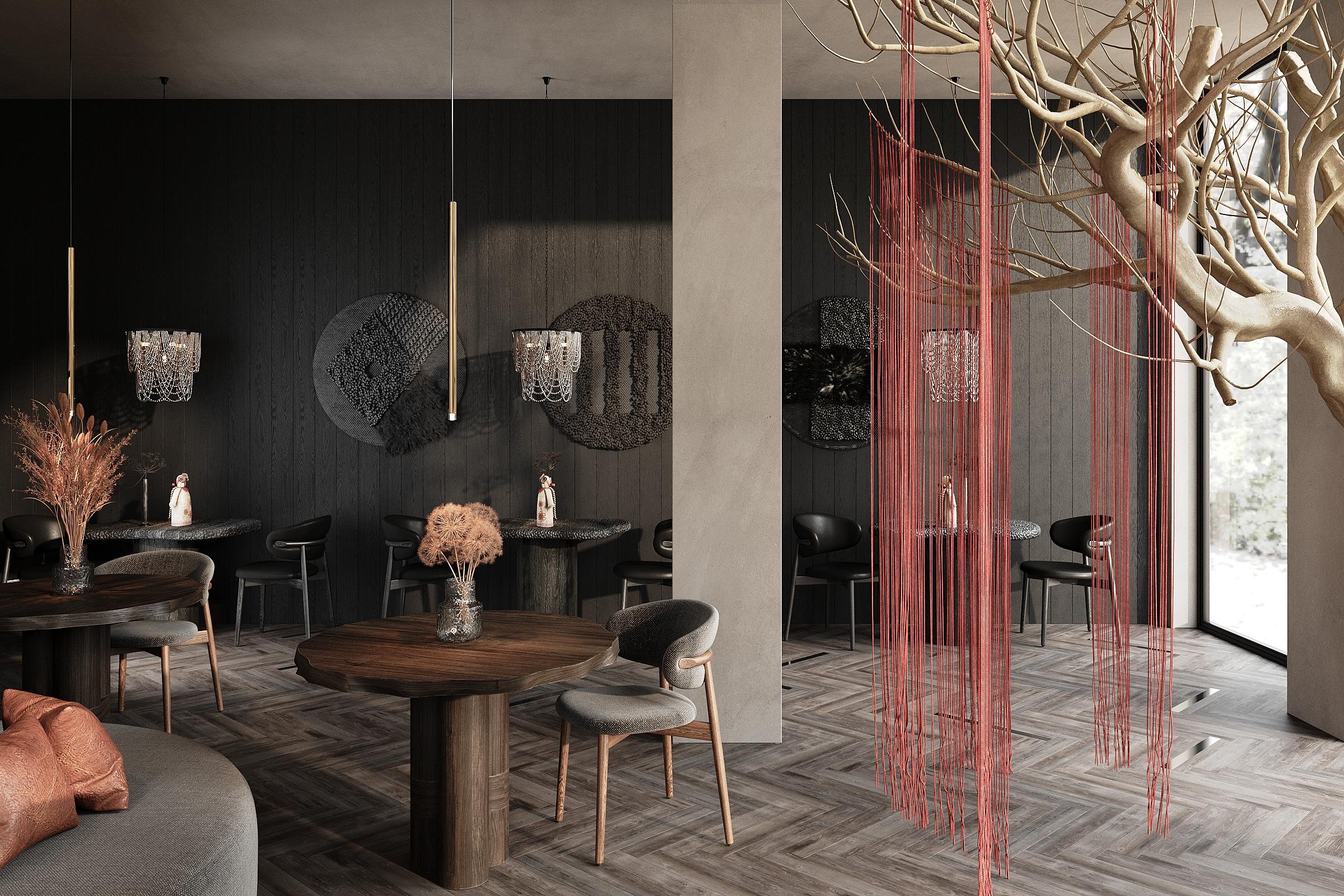
Interior Design of a Restaurant by ZIKZAK Architects
Textures: A Tactile Dialogue with Visitors
Touch is one of the most powerful channels of information perception, which is often underestimated when designing commercial spaces. The textures of surfaces influence our emotions and behavior much more strongly than one might imagine. When a client sits on a soft velvet sofa in the lounge area of a business center, their brain receives a signal about comfort and safety. This automatically reduces the level of stress and sets them up for a positive interaction experience.
In our practice, we often use contrasting textures to create emotional accents. For example, in one of the new restaurant projects, the combination of the rough roughness of natural stone on the walls with the smooth glossy surfaces of the tables set a balance between naturalness and sophistication. Visitors unconsciously run their fingers over the textured wall surface, and this gives them a sense of connection with the space, making it more personal.
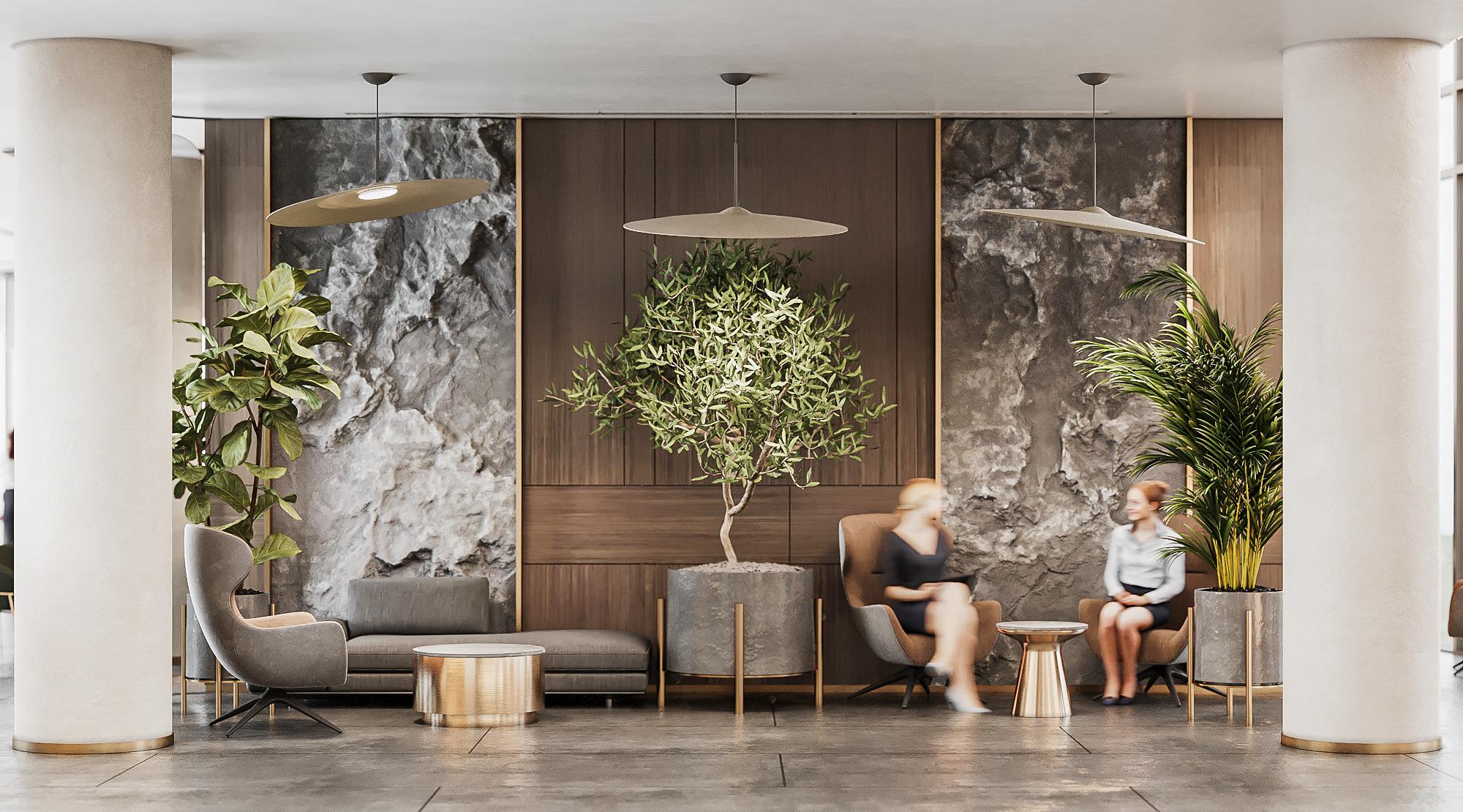
Business Center Design by ZIKZAK Architects
Microzones: The Art of Emotional Zoning
Modern people experience a wide range of emotional states throughout the day, and the space should respond to this diversity. Creating microzones is not just about physically dividing the space, but also about understanding human psychology and the various use scenarios for the premises.
In one of our coworking projects, we created a network of "emotional islands." The space smoothly transitions from dynamic zones for teamwork, where bright lighting and active colors stimulate creativity and lively exchange of ideas, to quiet private zones with subdued lighting and a soothing color palette. We paid special attention to acoustic comfort: a specially designed sound insulation system allows different zones to coexist without interfering with each other.
The key is to design microzones that cater to the diverse emotional needs of the users. By creating a variety of environments within the larger space, we can support different work modes, moods, and activities. This tailored approach helps ensure the overall space remains engaging, productive, and adaptable to the ever-changing needs of the occupants.
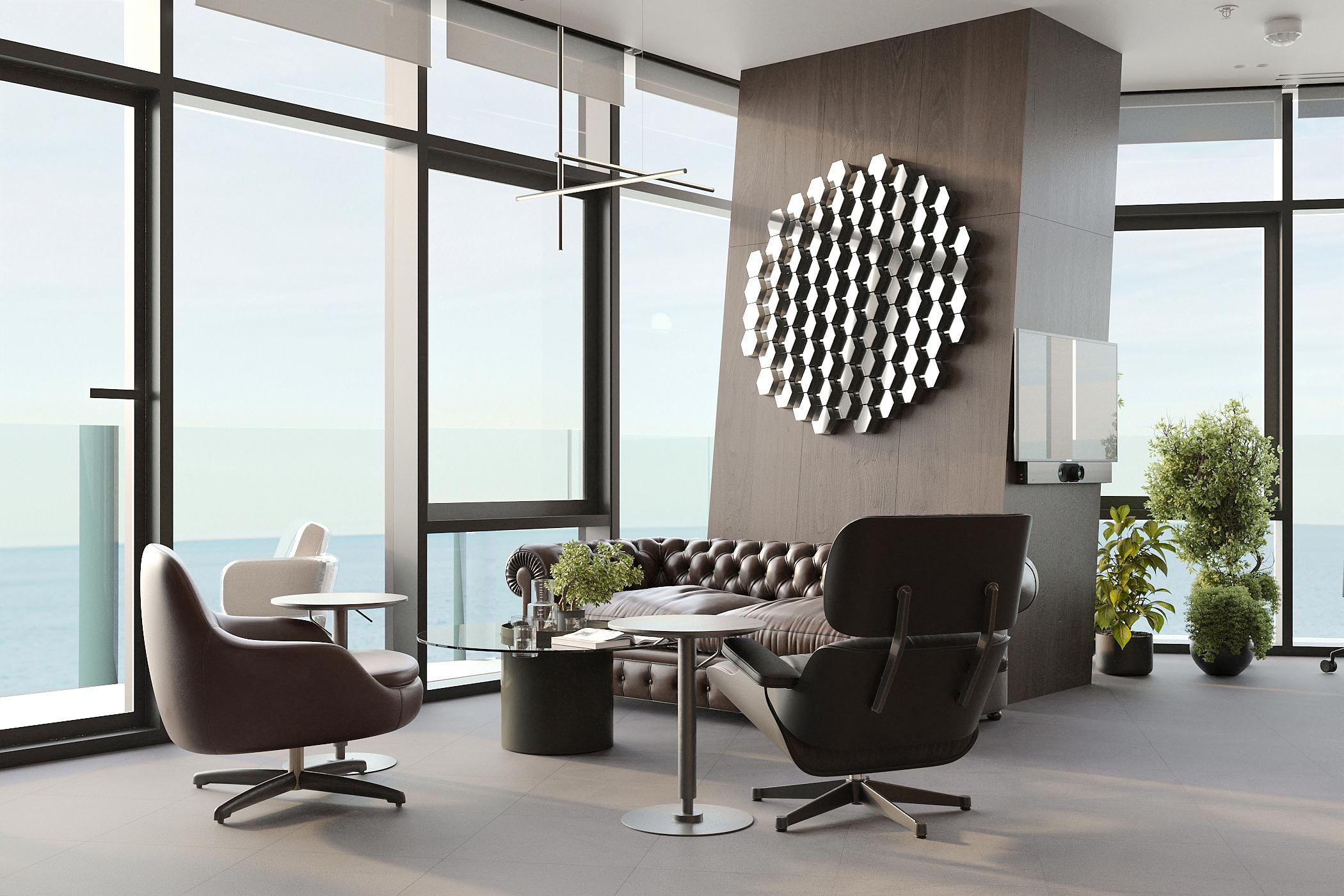
Coworking Interior Design by ZIKZAK Architects
Visual Accents: The Technique of Native Influence
The human eye is naturally drawn to contrasts and accents, and this feature of our perception can be effectively used in the design of commercial spaces. But the true art lies in making these accents work invisibly, creating the right flow of visitors and highlighting key zones.
In the project of a flagship store for a fashion brand, we used a lighting system that automatically adjusts the intensity and color temperature of the light depending on the time of day and natural lighting conditions. Accent lighting on individual collection items creates a visual hierarchy and helps customers intuitively focus their attention on the most important products. At the same time, the lighting system itself remains inconspicuous to visitors.
The key is to strategically place visual accents that guide the customer's gaze and movement through the space without being overtly obvious. This "native" approach to influence allows the design to seamlessly integrate with the user experience, creating a more organic and intuitive flow through the environment.
By mastering the art of subtle, yet impactful visual accents, designers can shape the behavior and perception of customers in a way that supports the overall commercial goals of the space.
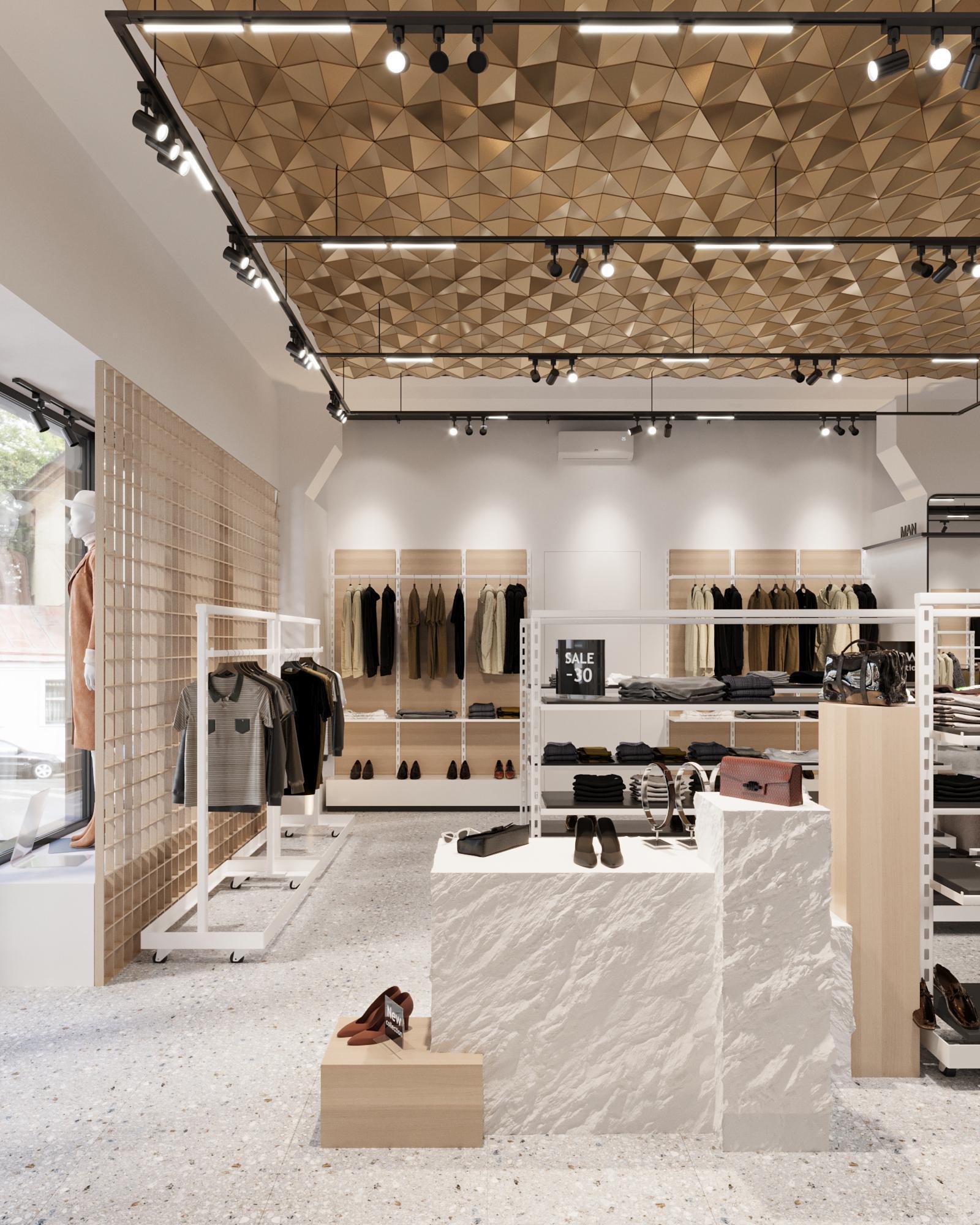
Retail Space Design by ZIKZAK Architects
Sensory Design: A Symphony of Senses
Creating a truly effective commercial space requires an understanding of how different sensory stimuli interact with each other and influence human behavior. This is a complex science that combines knowledge from psychology, neurobiology, and design.
In one of our recent spa center projects, we developed a comprehensive sensory concept where each element works to create an atmosphere of relaxation and restoration. Specially selected lavender and sandalwood scents, combined with a soft light-and-shadow rhythm and soothing background music, create an environment that literally "switches" visitors into a state of calm and relaxation. Particular attention was paid to tactile sensations: from the texture of the towels to the temperature of the surfaces - every element was carefully selected for maximum comfort.
The key to sensory design is to orchestrate a harmonious symphony of sights, sounds, smells, and textures that work together to shape the desired emotional and behavioral response from the user. By understanding the complex interplay of the senses, designers can craft immersive commercial environments that feel intuitive, engaging, and profoundly impactful.
It's not just about creating a visually appealing space, but rather designing a holistic experience that resonates with all of the user's senses. This multisensory approach is what elevates a space from merely functional to truly transformative.
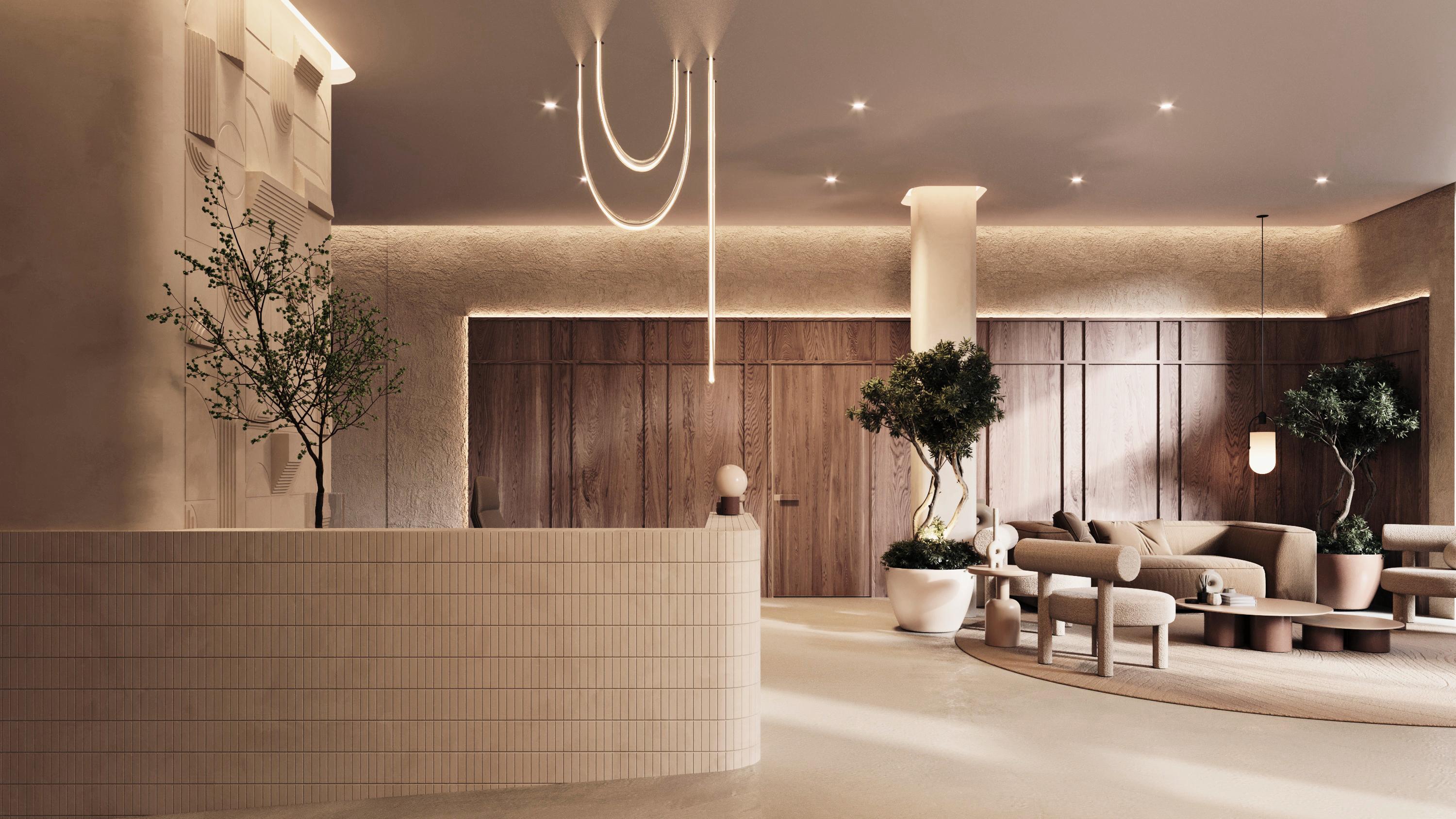
Spa Center Design by ZIKZAK Architects
The Psychology of Space: The Profound Influence of Architecture
Architectural decisions have a much deeper impact on our well-being and behavior than we often realize. Ceiling heights, room proportions, furniture shapes - all these elements shape our subconscious perception of a space and influence our emotional state.
In the project for a technology company office, we experimented with varying ceiling heights and room shapes. The zones for creative meetings were designed with high, open ceilings, which helps promote more abstract and creative thinking. In contrast, the areas for focused work had lower, suspended ceilings, which assists with concentration on specific tasks. Rounded furniture edges and the absence of sharp corners create a subconscious sense of safety, which is particularly important in spaces where people spend a lot of time.
The key is to understand how different architectural elements can subtly trigger psychological responses in the human mind. By consciously designing spaces that align with the desired cognitive and emotional states, architects and designers can create environments that profoundly influence the well-being, productivity, and overall experience of the occupants.
It's not just about aesthetic appeal, but about crafting spaces that speak to the deeper, subconscious needs and preferences of the people who inhabit them. This level of psychological awareness is what transforms architecture from a mere physical structure into a powerful tool for shaping human behavior and experience.

Office Interior Design by ZIKZAK Architects
Practical Experience and Results
Over more than 10 years of working on commercial spaces, we have accumulated a vast database on how different design decisions impact human behavior and the business metrics of our clients. For example, in a network of coworking spaces, after implementing our system of microzoning and sensory design:
- The average length of stay for clients increased
- The rate of contract renewals rose
- Satisfaction with the space improved
A particularly illustrative case was the renovation of a restaurant, where changes to the textures and lighting in the main hall led to an increase in the average check size - customers started spending more time in the establishment and more frequently ordered desserts and drinks after their main meals.
The data clearly shows that thoughtful, user-centric design can have a tangible, measurable impact on the performance and success of commercial spaces. By understanding the psychological and sensory mechanisms that shape human experience, designers can create environments that not only look appealing, but also actively support the business goals of their clients.
This practical, evidence-based approach is the hallmark of our work. We don't rely on guesswork or trends - instead, we use rigorous data analysis and years of accumulated expertise to craft commercial interiors that deliver real, quantifiable results for our clients.
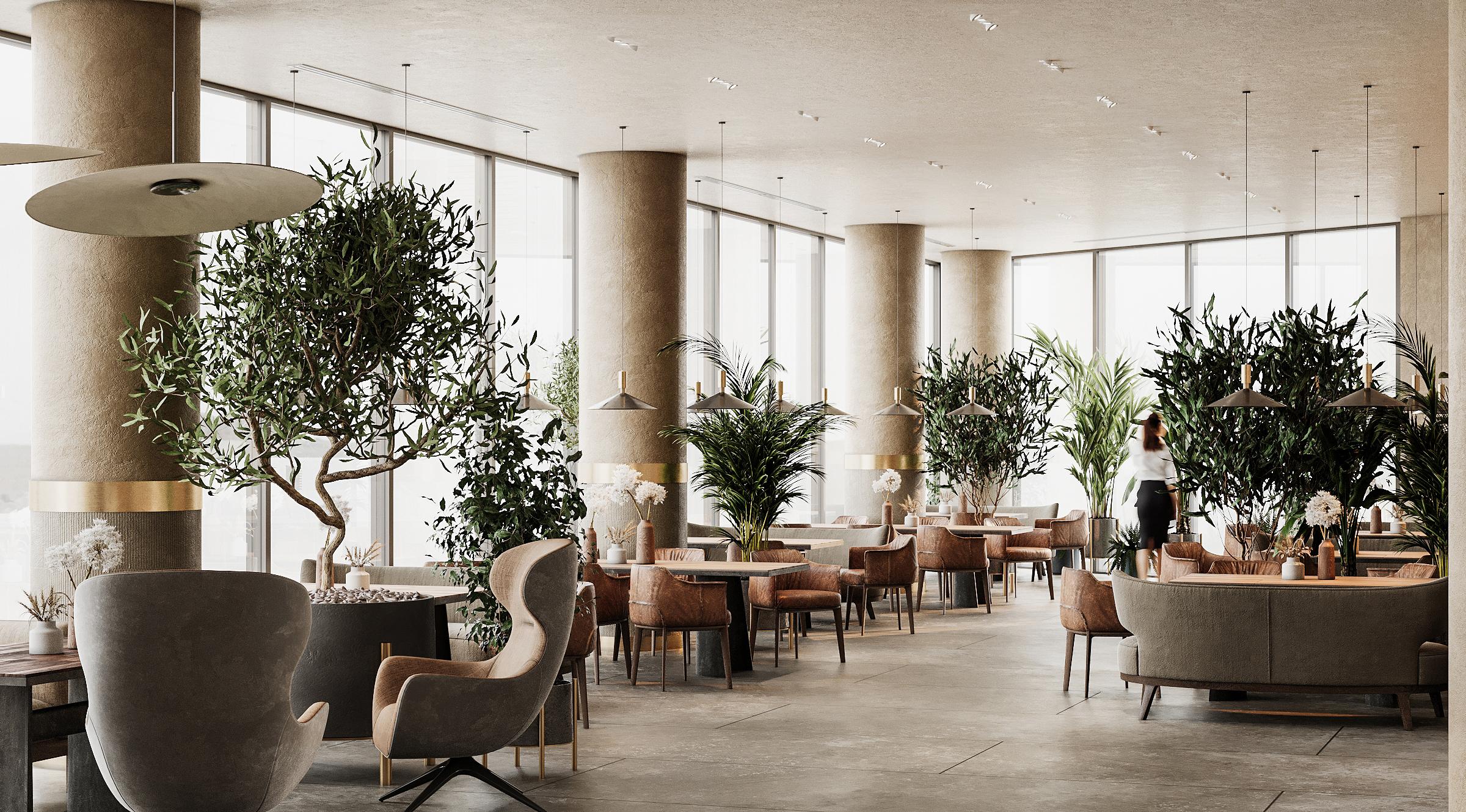
Interior Design of a Restaurant by ZIKZAK Architects
Creating a successful commercial space is a masterful balancing act between functionality and emotional impact, between the obvious and the subtle, between the immediate business needs and long-term perspectives. Every detail, from the sound of footsteps on the floor to the shade of light over a workstation, matters and plays its role in the overall impression and effectiveness of the space.
The best design is the one that works so naturally and harmoniously that people don't even think about why they feel so comfortable in the space. They simply feel good, work productively, enjoy their time, and want to come back again and again.
The key is to create environments that intuitively respond to the diverse needs and preferences of the users, seamlessly blending the practical and the emotional. By deeply understanding the psychology of human perception and behavior, designers can craft commercial spaces that are not only visually appealing, but also profoundly impactful on the experiences, productivity, and loyalty of the people who inhabit them.
It's not just about creating a beautiful interior - it's about designing a holistic, multisensory environment that actively supports the goals and aspirations of the business. This level of nuanced, user-centric approach is what transforms a mere physical structure into a powerful tool for commercial success.
Read also:

